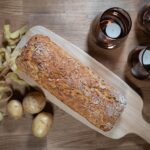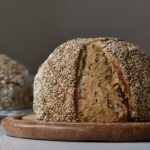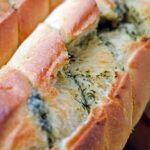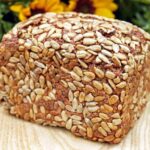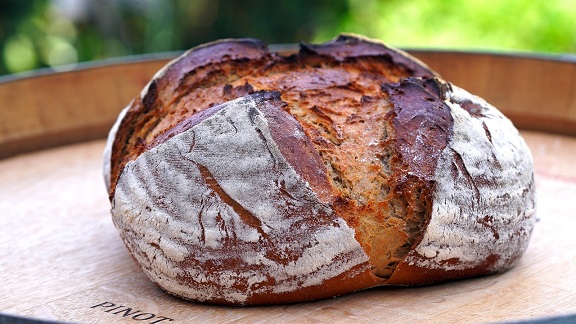
Crisp crust. Deep rye flavor. Rustic aroma. Few things are more comforting than a thick slice of warm Bauernbrot, or German Farmer’s Bread, slathered with butter. This hearty, crusty loaf is a staple of traditional German cuisine and has been a mealtime essential for centuries.
Bauernbrot is beloved not just for its bold taste and satisfying texture, but for its deep cultural roots—born from centuries-old rural traditions, yet still found on bakery shelves and dinner tables across Germany today. Let’s explore its history and learn how to make it at home.
The Origins of Bauernbrot
Bauernbrot originated centuries ago in rural Germany as a practical solution for feeding large families. Farmers relied on rye—a crop that grows well in colder climates—mixed with wheat to create a durable, nourishing loaf. Before modern ovens, these breads were often baked in communal wood-fired ovens and were intended to last several days. Each region developed its own take on the recipe, with differences in sourness, density, and seasoning.
Today, Bauernbrot remains a symbol of German culinary tradition. It’s commonly served in Bavaria, Hesse, and the Rhineland, and you’ll find it in bakeries and homes alike. It’s especially popular during autumn and winter months, when hearty, comforting foods take center stage.
Ingredients & Preparation
Ingredients for Authentic Bauernbrot
For the sponge (pre-ferment):
- 1 cup (120g) rye flour
- 1 cup (240ml) lukewarm water
- 1/4 teaspoon active dry yeast
For the dough:
- All of the sponge
- 2 cups (240g) bread flour or all-purpose flour
- 1 cup (120g) rye flour
- 1 cup (240ml) warm water
- 1½ teaspoons salt
- 1 tablespoon caraway seeds (optional)
Recommended tools:
- Large mixing bowl
- Kitchen scale (for accuracy)
- Banneton (proofing basket)
- Dutch oven or baking stone
- Sharp knife or bread lame
Step-by-Step Instructions
1. Prepare the sponge
In a large bowl, mix the rye flour, lukewarm water, and yeast. Stir until well combined. Cover with a kitchen towel or plastic wrap and let it rest at room temperature for 12 to 16 hours. It should become bubbly and slightly sour-smelling.
2. Make the dough
To the sponge, add bread flour, rye flour, warm water, salt, and caraway seeds if using. Mix with a wooden spoon or dough hook until a rough dough forms. Knead by hand or with a mixer for 10–12 minutes until smooth and elastic.
3. First rise
Transfer the dough to a lightly oiled bowl. Cover and let it rise in a warm spot for 1½ to 2 hours, or until doubled in size.
4. Shape the loaf
Turn the dough out onto a floured surface. Shape it into a round or oval loaf. Place the dough seam-side up in a floured banneton or seam-side down on a parchment-lined baking sheet.
5. Second rise
Cover the shaped loaf and let it rise for 45 to 60 minutes. Meanwhile, preheat the oven to 475°F (245°C). If using a Dutch oven, place it inside to preheat.
6. Score and bake
Carefully turn the dough onto a baking stone or into a Dutch oven. Score the top with a sharp blade to help it expand. Bake for 40–45 minutes, reducing the temperature to 425°F (220°C) after 10 minutes.
7. Cool before slicing
Remove the bread from the oven and allow it to cool on a wire rack for at least 1 hour before slicing.
How to Serve Bauernbrot
This bread is delicious plain or toasted, and it pairs well with a wide variety of traditional German toppings and dishes. Serve it with:
- Cold cuts and cheeses (Abendbrot-style)
- Mustard, pickles, and smoked meats
- Hearty soups like lentil, goulash, or pea soup
- Herb butter or quark with fresh herbs
It also makes an excellent base for open-faced sandwiches, known in Germany as Brotzeit, especially when topped with radishes, cucumbers, or liverwurst.
Variations & Regional Styles
Bauernbrot varies by region. In Swabia, it’s often made with a higher ratio of wheat flour and baked into oblong shapes. In the Rhineland, bakers may add a touch of molasses or beer to deepen the flavor and color. Some versions are sourdough-based for a stronger tang and longer shelf life.
Other creative variations include adding sunflower seeds, flax seeds, or even mashed potato for a moister crumb. While caraway seeds are traditional, they’re entirely optional—many modern bakers skip them in favor of a more neutral flavor.
Bauernbrot is more than just bread—it’s a piece of living history. Rustic, nourishing, and packed with flavor, this traditional German loaf deserves a spot in every baker’s repertoire. Whether you’re exploring your heritage, craving a taste of Europe, or simply looking to try something new, making Bauernbrot at home is a deliciously rewarding experience.
Explore more classic recipes like Pretzel or Pumpernickel – German Rye Bread to keep your kitchen smelling like a German bakery.


